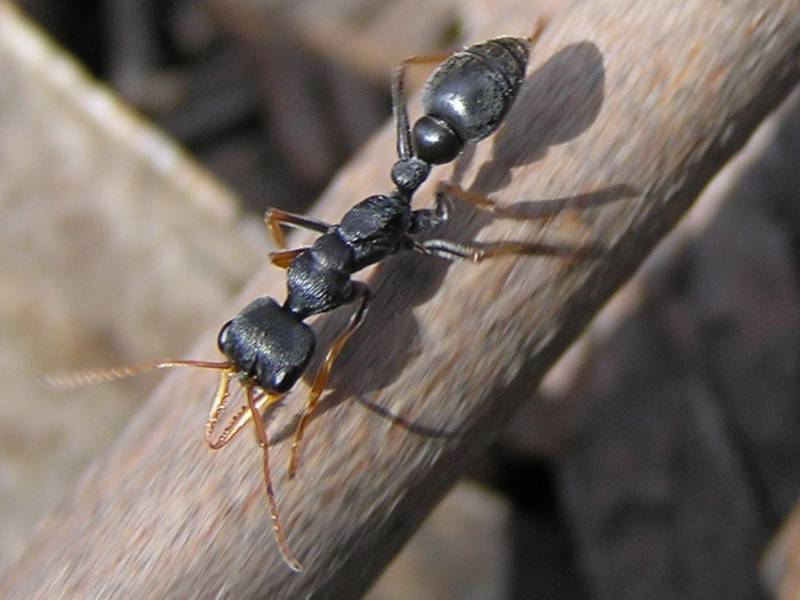Jack Jumper Ant (Myrmecia pilosula) - Wiki Jack jumper ant
From Wikipedia, the free encyclopedia
[Photo] Jack Jumper Ant (Myrmecia pilosula). A Jack Jumper ant (Myrmecia pilosula) photgraphed Tuesday, 19 October 2004 on it's nest in Tasmania. Photo by Ways
The jack jumper ant, hopper ant or jumper ant, Myrmecia pilosula, is a species of bulldog ant that is native to Australia. The ants are recorded throughout the country, but are most often found in Tasmania, rural Victoria, New South Wales, Australian Capital Territory and the southeast area of South Australia.
The jack jumper is the smallest of the bulldog ants, ranging from about 10 to 12 mm long, but the most aggressive and vicious. These ants are black, with yellow or orange legs, antennae and mandibles. Their characteristic jumping motion when in an agitated state gave them their name. Their nests may be inconspicuously hidden under a rock, or may be formed from a 20 to 60 cm diameter mound of finely granular gravel.
As with many species of bulldog ants, jack jumper ants are usually solitary when they forage, though they live in colonies like most ants, and only workers forage. They are highly territorial; fights among jack jumper ants from different colonies are not uncommon.
Jack jumper ants are carnivores and scavengers. They sting their victims with venom analogous to stings of wasps, bees, and fire ants. Their venom is some of the most powerful in the insect world. Jack jumper ants are proven hunters; even wasps are hunted and devoured. These ants have excellent vision, which aids them in hunting.
The symptoms of the stings of the ants are similar to stings of the fire ants. The reaction is local; swelling, reddening and fever, followed by formation of a blister. The heart rate increases, and blood pressure falls rapidly. In individuals allergic to the venom (about 3% of cases), a sting sometimes causes anaphylactic shock. Although 3% may seem small, jack jumper ants cause more deaths in Tasmania than spiders, snakes, wasps, and sharks combined.
Treatment is very similar to wasp and bee stings. There is also an allergy immunotherapy program developed for jack jumper stings utilising their own venom.
The jack jumper ant genome is contained on a single chromosome. Females have two copies.
http://en.wikipedia.org/wiki/Jack_jumper_ant
| The text in this page is based on the copyrighted Wikipedia article shown in above URL. It is used under the GNU Free Documentation License. You may redistribute it, verbatim or modified, providing that you comply with the terms of the GFDL. |
